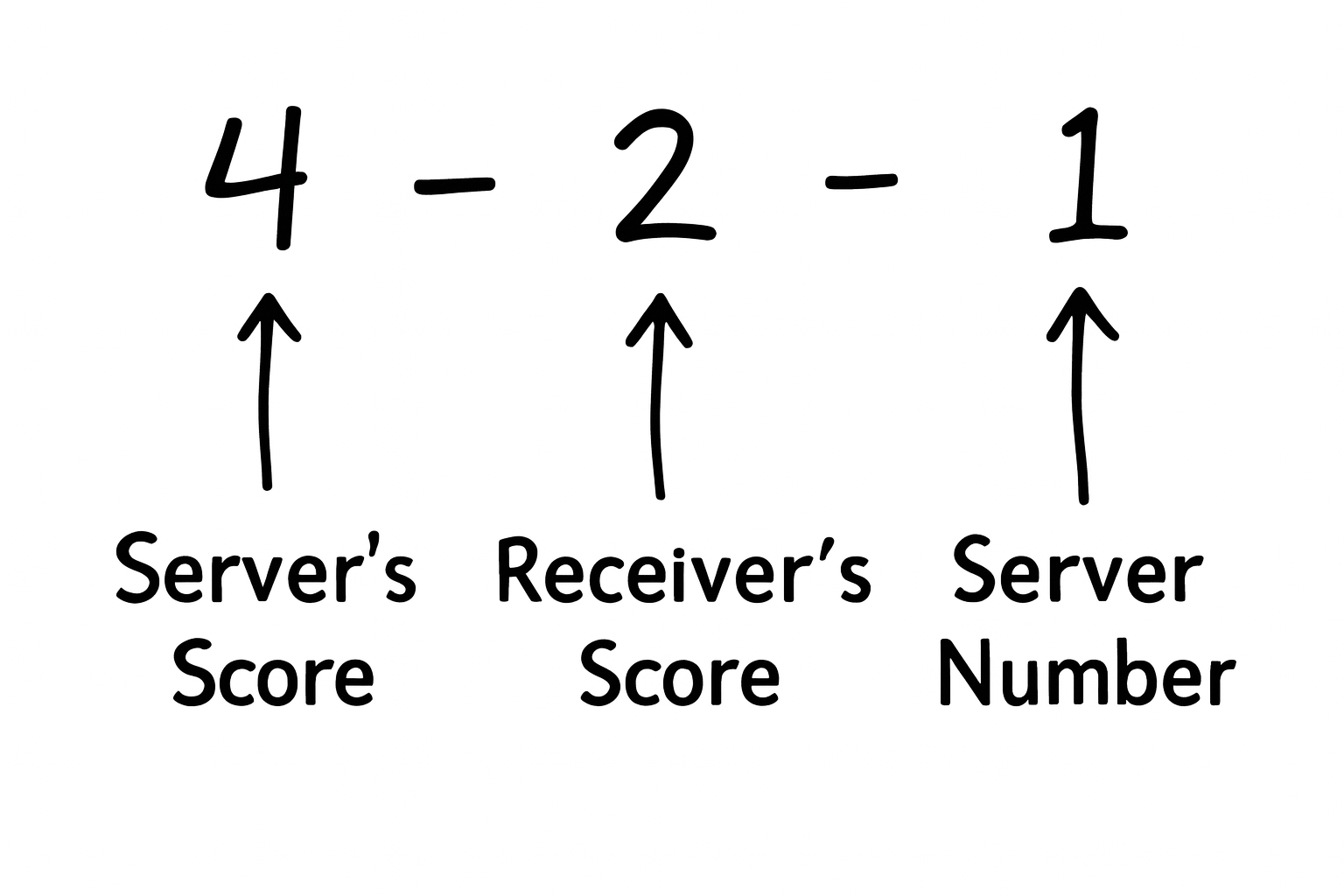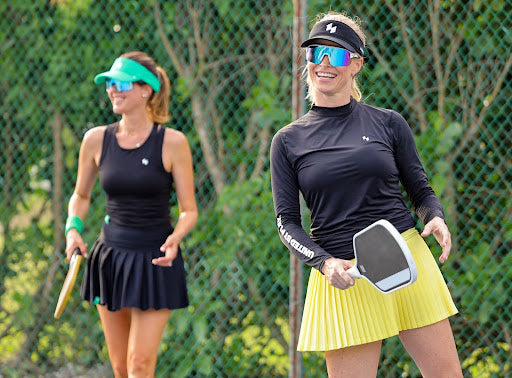
How to Keep Score in Pickleball (Singles, Doubles & Rally Scoring Explained)
Pickleball, the fast-growing paddle sport, saw a 300% increase in tournaments last year. While it is easy to learn, it also offers layers of strategic depth. A key aspect of truly enjoying and excelling in the game is understanding how to keep score in pickleball.
Whether you're a complete beginner stepping onto a pickleball court for the first time or a seasoned player looking to brush up on the nuances of the scoring system, this comprehensive guide will walk you through every detail. From traditional scoring to the less common rally scoring, and from doubles pickleball to singles pickleball, we’ll ensure you master the numbers and elevate your game.
The Foundation: Traditional Scoring in Pickleball
The vast majority of pickleball games, from casual play to a competitive pickleball tournament, utilize a scoring system often referred to as "traditional scoring" or "side-out scoring." This method is fundamental to the sport and the one you’ll encounter most frequently.
The Golden Pickleball Rule: Only the Serving Team Can Score
This is perhaps the most crucial rule to grasp when learning how to keep score in pickleball. Points can only be scored by the serving team. If the receiving team wins a rally, they do not score a point; instead, they earn the right to serve. This concept is vital for understanding the flow of the game and the importance of winning points on your service.
Winning a Game: First to 11, Win by 2
Most pickleball games are played to 11 points. However, there’s an important caveat: you must win by at least two points. So, if the score is 11-10, the game is not over. Play continues until one team has a two-point advantage, such as 12-10, 13-11, and so on. This "win by 2" rule adds an exciting element of suspense and strategy, especially in close matches. Some pickleball tournaments or informal games might be played to 15 or even 21, but the "win by 2" rule almost always applies.
The Score Call: A Three-Number System
When the serving team calls out the score, it's done using a three-number system for doubles pickleball. This is where many new players can get a little confused, but it's straightforward once you understand it.
The three numbers represent:
- Serving Team's Score: The first number announced is the current score of the serving team.
- Receiving Team's Score: The second number announced is the current score of the receiving team.
- Server Number: The third number indicates whether it's the first server (server 1) or the second server (server 2) on the serving team who is currently serving.
Example Score Call: "3-2-1" means the serving team has 3 points, the receiving team has 2 points, and it's the first server's turn to serve.
Understanding the score call is the easiest way to keep track of a game of pickleball!
Doubles Pickleball: The Serving Team Vs Service Turn
Doubles pickleball is the most popular form of the game, and its scoring system, while based on the traditional rules, has specific mechanics for the serving team.
Starting the Game: The Crucial "0-0-2"
At the very beginning of a doubles pickleball game, the score is announced as "0-0-2." This might seem counterintuitive since it's the first serve. Here’s why:
- 0-0: No points have been scored yet.
- 2: This signifies that the very first serving team of the game gets only one "service turn" – meaning only server 2 will serve for that team.
The Service Turn: Server 1 and Server 2
Once the initial "0-0-2" service is complete and the rally is lost, the service passes to the opposing team. From then on, a full service turn for a team typically consists of both partners serving.
- Server 1: The player on the right-hand side of the court (the even service court) starts the serve. They alternate sides as long as they win rallies.
- Server 2: If server 1 loses a rally, server 2 serves from their current position and alternates sides when winning rallies.
When was pickleball invented and how did it take over America?
When Does a Side-Out Occur?
A “side-out” happens when the serving team loses their chance to serve, and the other team takes over. Each team gets two chances to serve—first by one player, then by their partner. If both players lose their rallies, the serve switches to the other team.
Ready to step out onto the court? Make sure you have the right pickleball apparel!
Player Positioning and Serving Rotation: Understanding the Pickleball Court
Understanding player positions and the serving rotation is crucial for seamless scoring.
- The player in the right-hand service court (even court) serves when the score is even.
- The player in the left-hand service court (odd court) serves when the score is odd.
This helps prevent confusion about who should serve next. When server 1 loses a rally, server 2 serves from their current position.
Singles Pickleball Games: A Simpler Scoring Approach
Singles pickleball simplifies the scoring system as there's only one player per side.
- Only One Server: The player keeps serving as long as they win rallies.
- Two-Number Score Call: The score is announced as two numbers: your score, then your opponent's (e.g., "5-3").
- Serving Court Rules: Serve from the right (even) side when your score is even and from the left (odd) side when your score is odd.
- Side-Out: If the serving player loses a rally, the serve passes to their opponent.
Whether you’re playing singles or doubles, having a strong grasp of the scoring system is essential!
Beyond Traditional Pickleball Points Systems: Rally Scoring
While less common in recreational play, "rally scoring" is sometimes implemented in professional pickleball tournaments or specific formats by USA Pickleball.
How Rally Scoring Works
In rally scoring, a point is awarded to the team that wins the rally, regardless of whether they were the serving or receiving team.
Understanding Faults: What Makes You Lose a Rally
Common faults include:
- Serving Faults: Hitting the net, out of bounds, into the kitchen, or serving before the score is called.
- Kitchen Faults: Stepping into the non-volley zone and volleying the ball.
- Out of Bounds: Hitting the ball outside court dimensions.
- Hitting the Net: Ball hits the net and doesn’t cross over.
- Double Bounce: Letting the ball bounce twice before returning.
There are many ways to enjoy pickleball. Whichever you choose, make sure you have the right gear!
Get Ready to Dominate the Scoreboard With Premium Pickleball Apparel
At Eleven Social Club, we design pickleball apparel that elevates your game on the court. Our collection features technical fabrics with four-way stretch, offering unrestricted movement. With engineered comfort and moisture-wicking technology, our clothing keeps you comfortable and focused during any match. We believe that your gear should enhance your performance, allowing you to play your best game every time.


